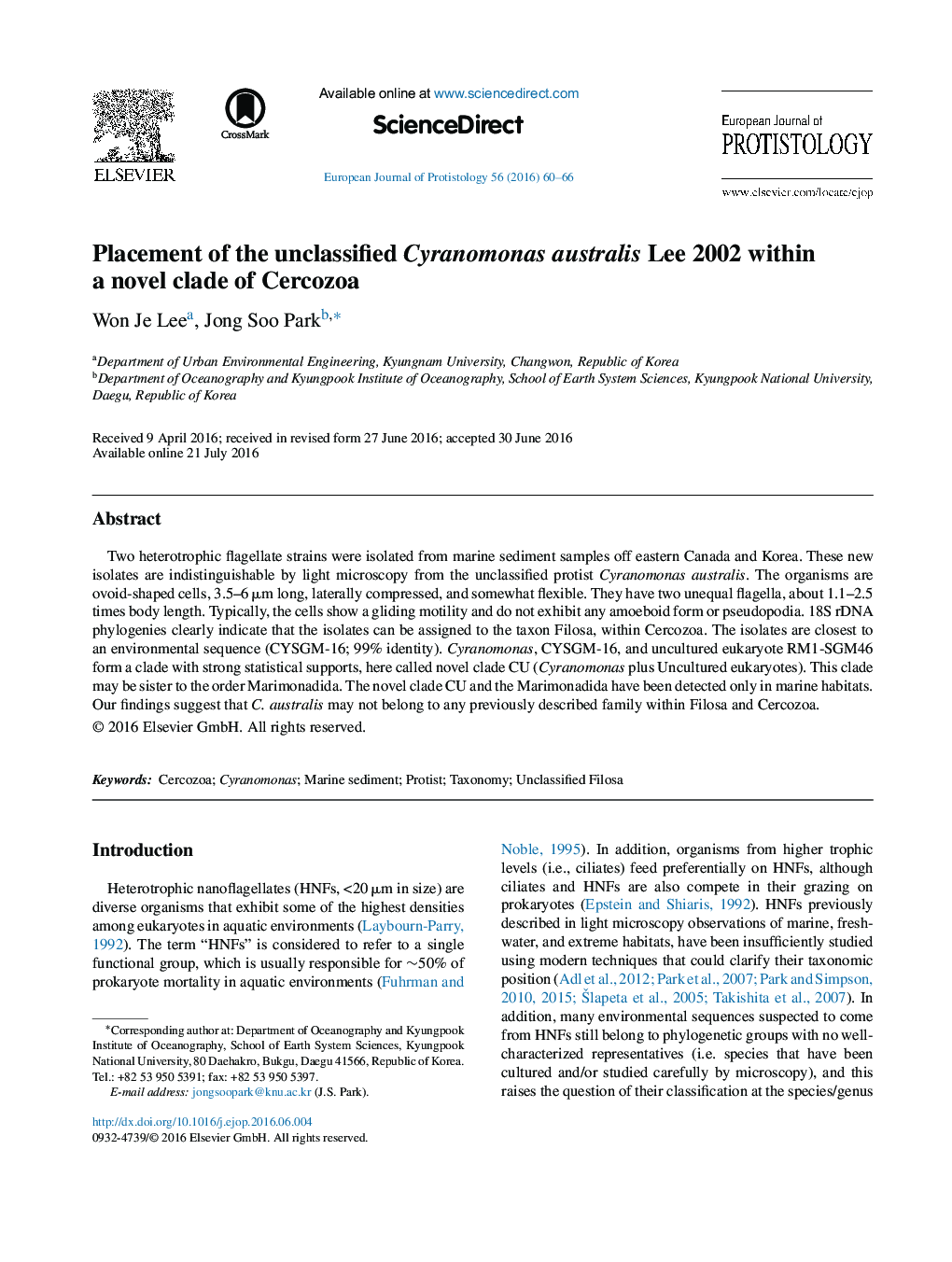| Article ID | Journal | Published Year | Pages | File Type |
|---|---|---|---|---|
| 2047122 | European Journal of Protistology | 2016 | 7 Pages |
Abstract
Two heterotrophic flagellate strains were isolated from marine sediment samples off eastern Canada and Korea. These new isolates are indistinguishable by light microscopy from the unclassified protist Cyranomonas australis. The organisms are ovoid-shaped cells, 3.5-6 μm long, laterally compressed, and somewhat flexible. They have two unequal flagella, about 1.1-2.5 times body length. Typically, the cells show a gliding motility and do not exhibit any amoeboid form or pseudopodia. 18S rDNA phylogenies clearly indicate that the isolates can be assigned to the taxon Filosa, within Cercozoa. The isolates are closest to an environmental sequence (CYSGM-16; 99% identity). Cyranomonas, CYSGM-16, and uncultured eukaryote RM1-SGM46 form a clade with strong statistical supports, here called novel clade CU (Cyranomonas plus Uncultured eukaryotes). This clade may be sister to the order Marimonadida. The novel clade CU and the Marimonadida have been detected only in marine habitats. Our findings suggest that C. australis may not belong to any previously described family within Filosa and Cercozoa.
Related Topics
Life Sciences
Agricultural and Biological Sciences
Agricultural and Biological Sciences (General)
Authors
Won Je Lee, Jong Soo Park,
